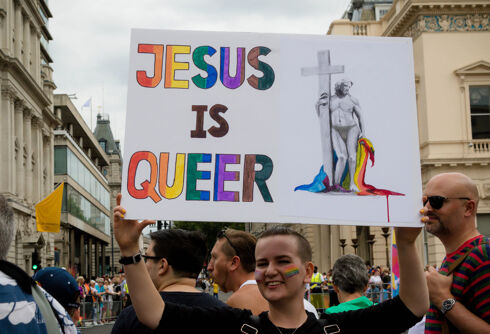An Australian study about the sound of men’s voices confirmed one theory while yielding surprising results about bisexual men.
The study aimed to determine whether people could identify if a man is bisexual from his voice alone. The findings indicate that they cannot. Instead, they usually decide that the bisexual man has the most masculine voice.
Related:
Twitter blows up after IKEA “unveiled” a shocking bisexual loveseat for Pride
The couch’s “Nobody Believes You” cushion raised eyebrows across the internet.
Previous research has indicated that the ability to determine whether a man is gay from his voice comes from a combination of factors. A higher pitch, wider pitch range, longer vowels, expanded vowel space, and more precise pronunciation are voice characteristics associated with gay men.
Never Miss a Beat
Subscribe to our newsletter to stay ahead of the latest LGBTQ+ political news and insights.
Scientists hypothesized that bisexual men’s voices might be considered more feminine-sounding than straight men’s and more masculine-sounding than gay men’s when it came to self-reported and observer-reported masculinity and femininity.
One hundred sixty participants, divided evenly between men and women, were asked to listen to voice samples from 60 men (divided evenly between gay, bisexual, and straight men). They rated the voices on a scale of zero (exclusively heterosexual) to ten (exclusively homosexual). They also rated the voices on their perceived level of masculinity or femininity.
The speakers recited the first two lines of the Australian national anthem. They recorded their voices on their smartphones, and the samples were adjusted to remove background noise and standardize volume.
62% of the participants could distinguish between a gay man’s and a straight man’s voice. Female listeners were more likely to guess correctly. Listeners could not identify a bisexual man with any accuracy at all.
Instead, their voices were rated more masculine than both straight and gay men’s voices. They were also rated to be more exclusively attracted to women than men than straight or gay men.
Research into bisexuality has lagged due to “bisexual erasure,” the tendency to overlook the largest segment of the LGBTQ+ community in favor of gay or straight men. Bisexuality has often been considered a phase or not a real identity, leading to feelings of isolation and invisibility.

















